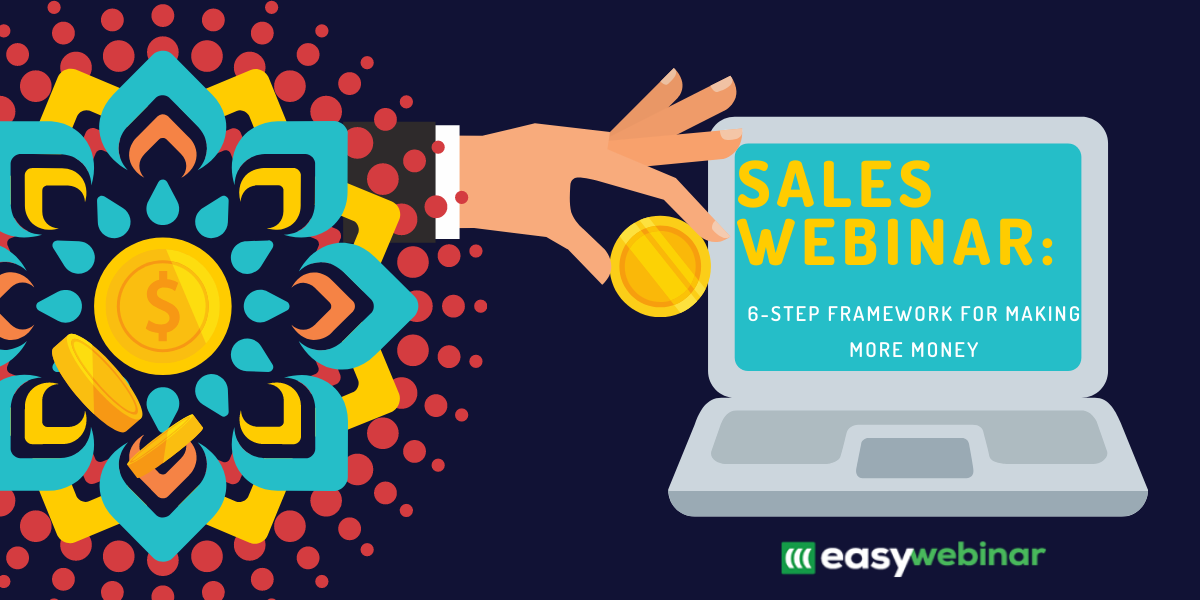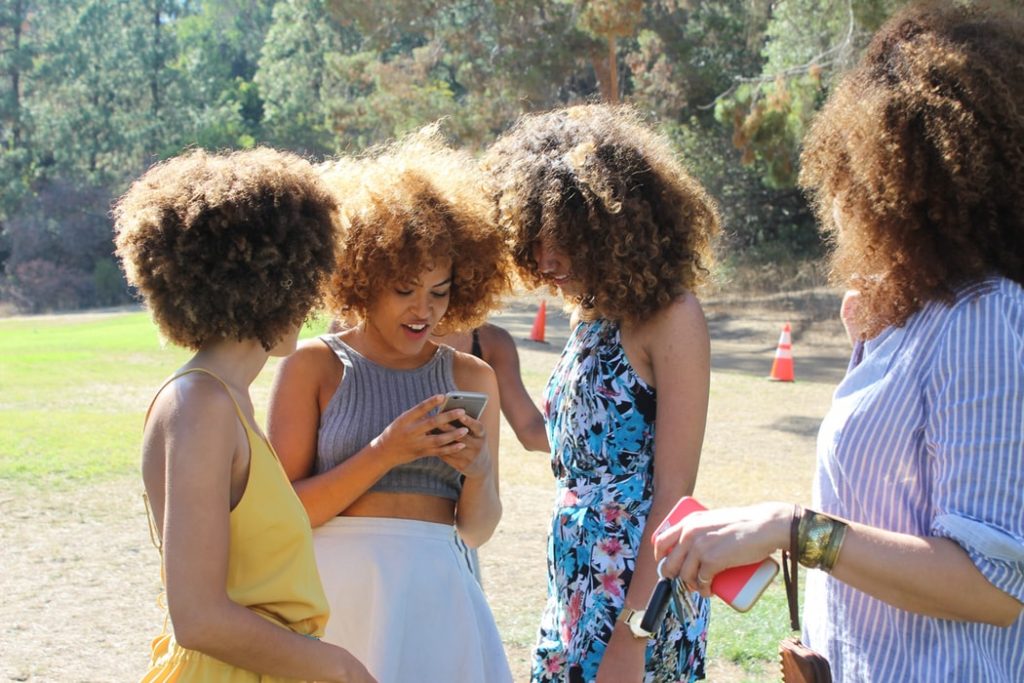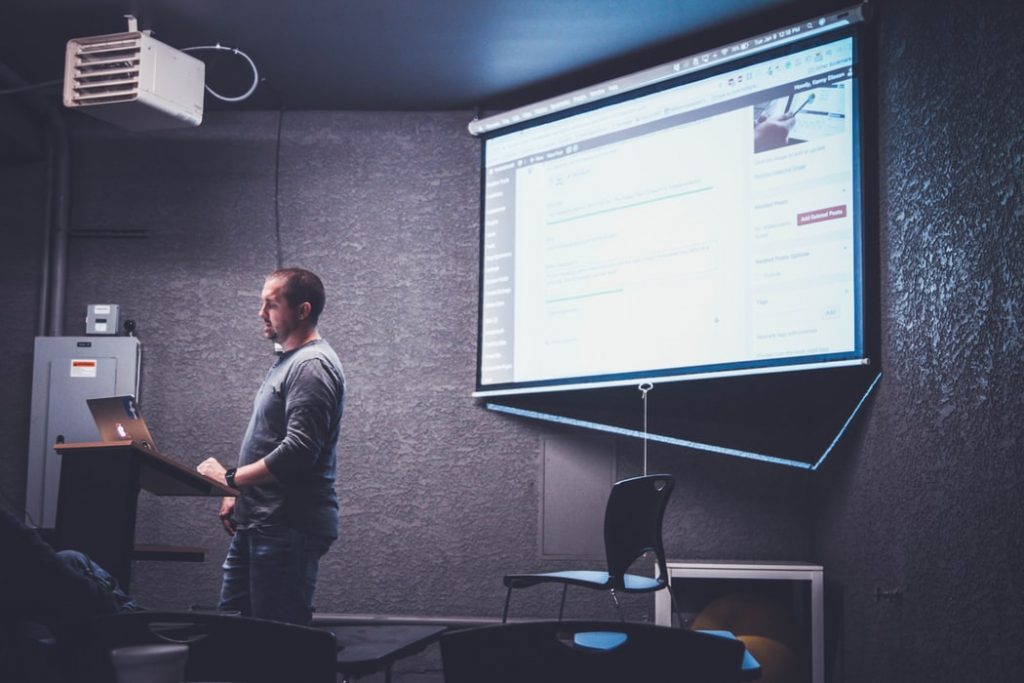Sales Webinar: 6-Step Framework for Making More Money

Are you looking for a step-by-step system to learn how to crush it with sales webinars?
In this article, I will share exactly how to create a sales webinar from the ground up. If you’re like most people, you see the advantages of running webinars for your business. But you also see some obstacles that are holding you back from getting started.
While it’s common to think there is so much necessary to run your first webinar, it actually doesn’t need to be that hard. Instead, I want to keep this simple so you can get started and take action today.
If you follow my 6-step webinar framework, I am confident that you can create your first sales webinar and scale your revenue like never before.
Watch this video where I break down the six steps to creating a webinar that converts:
Sales Webinar – 6 Steps to a High Converting Sales Webinar
As you can tell from the video, running an awesome webinar is all about creating a great experience for the user. Don’t forget, webinars usually run an hour-long, so it’s important that you provide enough value for your attendees to stick around.
Here are the six steps to creating a high converting webinar:
- Create buzz for your webinar
- Get personal during the intro
- Deliver epic webinar content
- Bridge your offer after providing value
- Q&A after the webinar is over
- End your webinar like a pro
1. Create Buzz For Your Webinar

Creating buzz for your webinar happens before your webinar date and in the first few minutes of the presentation. Here’s what I mean. To get people to attend your webinar, you need to drive traffic to your webinar registration page. You need to get people excited when they think about the potential transformation they can receive.
Driving Traffic to Your Webinar Registration Page
You can drive traffic to your webinar through paid ads and organic traffic. Here are some of the most common traffic sources:
- Facebook Ads: Facebook ads continue to be one of the top ways to get people to sign up for your webinar. You can use Facebook ads to get your message in front of cold traffic, retarget, and even remind people to attend your webinar. Plus, you can also create Instagram ads from your Facebook ads manager as well.
- LinkedIn: LinkedIn is another great way to generate buzz and get people to your webinar. You can run ads, post updates, engage in groups, and more. Learn more ways to use LinkedIn to convert more webinars here.
Some other popular ways are with a Twitter hashtag specific to your webinar, your email list, Youtube, and more. Get creative and utilize all of your followers to generate interest in your upcoming webinar.
Creating Buzz During the Webinar
Once you get people to your webinar, it’s time to capture their attention early on. As the host, it’s your job to keep people actively engaged with your webinar. With so many distractions, notifications, and updates, you need to captivate your audience early. Otherwise, they could sign off and never hear your pitch.
Start creating a buzz with your intro slides and call out to your ideal customer. Not everyone on the webinar is going to be a perfect fit for your offer and that’s okay.
But you want to make sure to call out your audience by saying something like, “If you’re a course creator, painter, photographer (or whoever is your target market)…This is for you.”
Speaking to your target audience will help you get the attention of the people that need it most. It will help you build excitement for your webinar and get them actively engaged early on.
Get Your Audience’s Attention
Before you start teaching your webinar topic, make sure to give your audience a clear expectation and anticipation for the event. Tell them that if they stick around, they will receive “XYZ transformation” or other gifts.
Lastly, make sure to get their full attention by letting them know they don’t want to miss anything so put away phones and turn off notifications. Then, it’s time to formally introduce yourself and let your audience learn more about your backstory.
2. Get Personal During The Intro

One of the biggest things I’ve learned from running hundreds, if not thousands of webinars, is that people buy on emotion. People won’t buy your offer because of the benefits. They buy based on what their life could be like if they get an amazing transformation.
In most cases, you are probably selling a digital product because you found success and want to help others. In this case, you want to share your story early on in the introduction. Tell them to stick around to learn the full transformation and give them a brief snippet of your journey.
Learning to Tell Your Story
While getting personal with a group of strangers on the internet might feel awkward at first, I promise it’s worth it. People want to know the nitty-gritty details because chances are, they are going through a lot of what you went through. While you want to share details, you also want to make sure it’s relatable to them.
Audiences want to learn how your story as it relates to them, not just your success story. I hate to say it but people don’t really care about you that much.
Not in a bad way, but more importantly people want to know what can you do for them. This is the part of the webinar where you want to bridge a connection between you and the attendees.
Tap Into Their Imagination
You should have a relatable story so they can think to themselves, “I’m like this person. If they can do it, I can too.” People need to see themselves in your transformation. Use words and phrases like “Imagine” or “Think for a moment what your life would be like if X.” These phrases will help bring in the imagination side of their brain.
As Albert Einstein said, “Logic will get you from A to B. Imagination will take you everywhere.” In my own experience and working with top Easy Webinar clients like Amy Porterfield, I’ve found that you need to connect with their heart first, then logic. It all starts by having them dream big and think big for what kind of transformation your offer can provide.
To help tell your story better, think back to where you were before you found the answer. Think back to how you solved those problems. The more you can relate with your audience, the more likely they will stick around and hear your pitch.
Ultimately, your story is sharing your journey over the past 2-3 years. Chances are, 99% of your audience is in that part of their journey right now. Make them understand that if you could get through certain obstacles they are facing, they can too (with your help).
Use Social Proof
The last aspect of getting personal is to share testimonials or success stories early in the workshop. Social proof has a huge effect on getting people to buy so make sure to seed them throughout your webinar.
If possible, don’t just share your story either. Instead, share your past coaching students, colleagues, and individuals who have already gone through your program.
3. Delivering Epic Webinar Content

Once you have delivered an inspirational introduction, it’s time to get into the core part of your training. This is the part of the sales webinar where you teach the lessons and deliver on the promise of your webinar.
You want to share the shifts that you’ve had over the past few years and give them valuable nuggets of wisdom. Remember, your webinar topic should directly relate to your online course or membership site. The core content should last about 30 minutes and provide enough value that even if people don’t buy your product, they still learned something new.
The main part of your webinar is to tease the audience and give them a preview of your offer. Teasing the best lessons from your course in a “5 Shifts to XYZ” or “3 Things I Learned to XYZ” is a great format. By having a set number of lessons, you can keep your webinar under an hour but still provide tons of useful information.
4. Bridging Your Offer After Providing Value

Once you have taught for about 35-40 minutes, you want to bridge into your offer. Depending on how you feel about selling, this part might feel awkward at first. But I promise, the more you run webinars, the easier it will become.
To make this part easier, you want to seed your offer in a non-sales way throughout the webinar. Then, once you want to present your offer, it will feel more natural and not go from teaching to hard-selling.
During the webinar, you should have been giving valuable lessons about how you overcame a specific problem. Then, you can easily bring up your program as “How” they can get similar results.
Begin to highlight your program and let them know what is included. Try to make this happen before the 42-minute mark as studies have found that on automated webinars, a good portion drops off after that time.
To get users to action and buy on the webinar, you want to offer epic webinar bonuses. These should be additional pieces of content that fill the gap in your content. Ideally, you want them to be paid offers like an ebook, complementary course, coaching call(s), etc.
Bonuses can make or break the sale so make sure to stack them and include the price of each offer. If your bonuses are worth more than the course and can help your students, they will be much more motivated to buy. Remember, these fast action bonuses expire once the webinar is over so make sure to reiterate that to your audience.
During this time, you also want to share positive testimonials and case studies from past students. This social proof can also help people relate and make them more inclined to take action.
5. Q&A After The Webinar Is Over

Once you’ve had time to explain your offer and show off testimonials, you want to do a Q&A with the audience. During the time, the “Buy Now” button is up on the screen and you are answering questions they might have.
In the Q&A, you want to handle objections to the sale so they feel confident and ready to buy. If you have a guarantee on your product, make sure to mention this as well.
But if you are doing automated webinars, you won’t have a live audience. Don’t worry, you can still handle objections event if it’s an evergreen webinar. To do this, pre-create ten of your most commonly asked questions. I’m sure a lot of these are on your sales page and think back to the questions you had a few years ago.
Aside from FAQ’s, you should also include ten SAQ’s (which stands for should ask questions). These SAQ’s should answer basic questions like who this offer is for, how it can help, and other questions you might have learned while creating your course.
Again, this is the time to knock out potential objections that are holding them back. If they have any doubt, they probably won’t buy on the spot. So make sure to address as much as possible to make them feel more comfortable.
6. End Your Webinar Like a Pro – Final Action Items

The final step to running a sales webinar is to end your webinar like a pro. Remember, each webinar format is different but in general, sales webinars should be around 60 minutes.
But if you’re running your first webinar, you might be thinking, “How do I end a webinar?”
First off, I suggest that you thank the people that are coming into your program. Begin to thank buyers and ask people to hit the chat box letting you know they joined. List out buyers by name so other people will see that fellow attendees are signing up now.
From there, simply announce that the fast action bonuses are going away and the webinar is going to end soon. Make sure to remind them that by purchasing your offer, they will get even more results than they did in the webinar.
I always like to frame it like, “You can get these results on your own but it could take 2-3 years as it did with me. Or, you can come into the program and get the step-by-step guide and fast track your success.”
I’ve found this is a great way to get people off the fence and into the program. If you’ve been doing webinars for a while and know that people are buying, you can also turn screen capture on and show notifications of people buying. This is more social proof to get people into your program.
And if you don’t get any buyers yet, I recommend analyzing your webinar and figure out ways to get better. If you’re just getting started, you won’t always have buyers and that’s okay. But make sure to learn from each event and figure out where you can improve to increase conversion rates.
Bonus: Turn Your Sales Webinar into an Automated Webinar

If you’ve done all of these six steps, I’m confident you will get sales from your live webinar. But don’t forget, you can also automate your webinar as well. With automated webinars, you don’t have to be in front of the computer doing live webinars and can instead use pre-recorded ones.
At Easy Webinar, we make it simple to upload a video as an evergreen webinar or use a previous one that converts well. Automated webinars will allow you to get more time back in your day so you can spend it with family, travel, or other parts of your business.
With each Easy Webinar plan, you can effortlessly set up automated webinars as well. Read more about the endless benefits of automated webinars here.
Sales Webinar Summary
Hopefully, my six-step framework has given you everything you need to launch a high-converting sales webinar. While it might feel like a lot to take in right now, remember that the more webinars you run, the easier it gets.
Here is a quick recap of what I covered in this post:
- Create buzz for your webinar – Use organic and paid ads to get as many people to your webinar. Then, create a buzz in the first five minutes of signing on.
- Get personal during the intro – This is the part of your webinar that will get your audience to trust you. Share your transformation with them and make it relatable so they can see themselves in your journey.
- Deliver epic webinar content – Once you’ve shared your story, give them valuable knowledge during the middle of the webinar. While you don’t want to overshare, make sure they have tangible advice to walk away with.
- Bridge your offer after providing value – Around the 40-minute mark, begin to transition to your offer. You want to make this feel like a natural progression, use social proof, and preview the course.
- Q&A after the webinar is over – Once you’ve soft pitched your offer, open up any Q&A’s from your live audience. If you are doing it automated, have 10 FAQs and SAQ’s already created.
- End your webinar like a pro – Toward the 60-minute mark, wrap up your webinar, confirm fast action bonuses, and encourage people to sign up now.
I hope this helps you create a killer sales webinar that people love watching and helps grow your business! Don’t forget, once you have a great live webinar, convert to automated for income on autopilot.
